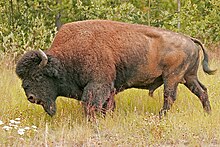Post by dinosauria101 on Feb 17, 2019 16:37:53 GMT 5
Indian Lioness (coalition of 2) - Panthera leo persica
The Asiatic lion (Panthera leo persica), also known as the Indian lion, is a lion subspecies that exists as a single isolated population in India's Gujarat State. It is listed as Endangered by IUCN based on the small population size. The lion population has steadily increased in Gir Forest National Park, more than doubling from a low of 180 individuals in 1974 to a level of 411 individuals consisting of 97 adult males, 162 adult females, 75 sub-adults, and 77 cubs as of April 2010. The Asiatic lion was first described by the Austrian zoologist Meyer under the trinomen Felis leo persicus. It is one of the five big cats found in India, apart from Bengal tiger, Indian leopard, snow leopard and clouded leopard. It formerly occurred in Persia, Mesopotamia, Baluchistan, from Sind in the west to Bengal in the east, and from Rampur and Rohilkund in the north to Nerbudda in the south. It differs from the African lion by less inflated auditory bullae, a larger tail tuft and a less developed mane. The most striking morphological character, which is always seen in Asiatic lions, but rarely in African lions, is a longitudinal fold of skin running along its belly. Asiatic lions are slightly smaller than African lions. Adult females weigh 110 to 120 kg (240 to 260 lb).

Wood Bison - Bison bison athabascae
The wood bison (Bison bison athabascae) or mountain bison (often called the wood buffalo or mountain buffalo), is a distinct northern subspecies or ecotype of the American bison. Its original range included much of the boreal forest regions of Alaska, Yukon, western Northwest Territories, northeastern British Columbia, northern Alberta, and northwestern Saskatchewan. In comparison to plains bison (the other surviving North American subspecies/ecotype), wood bison is heavier, with males averaging 910 kg (2,000 lb), making it the largest terrestrial animal in North America. The highest point of the wood bison is well ahead of its front legs, while the plains bison's highest point is directly above the front legs. Wood bison also have larger horn cores, darker and woollier pelages, and less hair on their forelegs and beards.

Credit to Wikipedia
The Asiatic lion (Panthera leo persica), also known as the Indian lion, is a lion subspecies that exists as a single isolated population in India's Gujarat State. It is listed as Endangered by IUCN based on the small population size. The lion population has steadily increased in Gir Forest National Park, more than doubling from a low of 180 individuals in 1974 to a level of 411 individuals consisting of 97 adult males, 162 adult females, 75 sub-adults, and 77 cubs as of April 2010. The Asiatic lion was first described by the Austrian zoologist Meyer under the trinomen Felis leo persicus. It is one of the five big cats found in India, apart from Bengal tiger, Indian leopard, snow leopard and clouded leopard. It formerly occurred in Persia, Mesopotamia, Baluchistan, from Sind in the west to Bengal in the east, and from Rampur and Rohilkund in the north to Nerbudda in the south. It differs from the African lion by less inflated auditory bullae, a larger tail tuft and a less developed mane. The most striking morphological character, which is always seen in Asiatic lions, but rarely in African lions, is a longitudinal fold of skin running along its belly. Asiatic lions are slightly smaller than African lions. Adult females weigh 110 to 120 kg (240 to 260 lb).

Wood Bison - Bison bison athabascae
The wood bison (Bison bison athabascae) or mountain bison (often called the wood buffalo or mountain buffalo), is a distinct northern subspecies or ecotype of the American bison. Its original range included much of the boreal forest regions of Alaska, Yukon, western Northwest Territories, northeastern British Columbia, northern Alberta, and northwestern Saskatchewan. In comparison to plains bison (the other surviving North American subspecies/ecotype), wood bison is heavier, with males averaging 910 kg (2,000 lb), making it the largest terrestrial animal in North America. The highest point of the wood bison is well ahead of its front legs, while the plains bison's highest point is directly above the front legs. Wood bison also have larger horn cores, darker and woollier pelages, and less hair on their forelegs and beards.

Credit to Wikipedia


